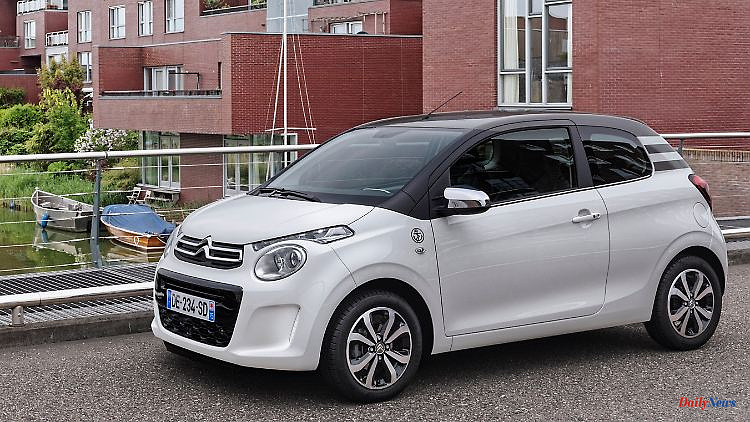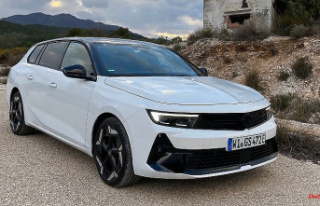Micro have become rare as new cars. This has an impact on the supply of used cars, as can be seen with the second-generation Citroën C1. How does it fare in the TÜV main inspections? At least it's better than its predecessor, but there are still weak points. About the light.
The range of microcars in Germany is shrinking. More and more manufacturers are withdrawing from the production of the automotive midgets. So does Citroën. There is currently no successor to the C1, the second generation of which was available between 2014 and 2022 and rolled off the assembly line with the Peugeot 108 and Toyota Aygo in Kolin, Czech Republic. Interested parties have to find what they are looking for on the used car market.
body and interior
The 3.47 meter short C1 was offered with three or five doors. While the driver and front passenger still have a comparatively large amount of space around them, it is very cramped in the rear. The rear seat is more suitable as an extension of the small trunk (196 liters). If you fold down the rear seat, the volume increases to 780 liters. The city flea scores points with its turning circle of 9.6 meters.
Interested parties have to make compromises when it comes to the material quality. The insulation is only halfway successful; there's a lot of hard plastic in the interior, and the seats are more flimsy than comfortable. As an alternative to a fixed roof, Citroën offered an electric, wide-opening folding roof, allowing the "Airscape" models to pass as convertible replacements.
In mid-2018, the C1 received a facelift, which was hardly noticeable visually. Some additional decor options brought some freshness to the interior.
engines and propulsion
The choice of engines is clear. When the second generation was launched, there was a choice of two three-cylinder petrol engines, a 1.0 liter with 51 kW/68 hp and a 1.2 liter with 60 kW/82 hp. Drivers who like it faster and now and then plan longer motorway routes in addition to city traffic are in good hands with the more powerful engine. The standard sprint succeeds here in 11 seconds, the top speed is reached at 170 km/h. In addition, it offers at least 118 Nm of torque. With an average of 4.3 liters, it is on the same consumption level as the smaller unit (4.1 to 4.3 liters).
In the course of the facelift, the 1.2 flew out of the program. With the one-liter three-cylinder, which came from the cooperation with Toyota, the output increased to 53 kW/72 hp. The maximum torque dropped from 95 to 93 Nm. Both engines were powered by a five-speed manual gearbox. As an alternative, there was an automated manual transmission ("Efficient Tronic") for the 1.0-liter three-cylinder, which, however, made itself felt through jerky shifting.
equipment and security
As is often the case with small cars, the basic version (Start) of the C1 was intended more for fleet users such as delivery or social services. The lack of power steering, radio, divisible rear seat backrest and air conditioning pushed the new price to around 9000 euros. If you want more comfort, look for the higher equipment lines "Live", "Feel" and "Shine". During the production period, however, the composition of the equipment levels has changed from time to time: prospective buyers should take a close look at the details that are on board. In addition, Citroën always launched special models in between. These often came with attractive extras and colorful applications.
Depending on the equipment, models from the facelift have a modern infotainment system that masters the connectivity standards Mirrorlink, Apple Carplay and Android Auto. The range of assistance systems such as collision avoidance or lane departure warning has been expanded to include traffic sign recognition. The C1 achieved four out of five stars in the 2014 NCAP crash test.
quality
The good news: The second generation does better than its predecessor in the TÜV main inspections (HU). The bad: There are still weak points. Brake components and the exhaust system cause problems from the second HU. Even when it comes to light, the little Frenchman can't always score points and is unpleasantly noticeable due to the setting of the low beam. The testing of the chassis components (axle suspension, axle springs/damping, steering) usually ends without any major complaints.
Conclusion: Small cars are in demand, which has an impact on used car prices. Older C1 models are offered on the used car portals from around 5000 euros. If you want a model with a folding roof, you have to dig deeper into your pocket. Such specimens are available for purchase from around 7000 euros. Those interested in older models should note that a recall was carried out in 2016. This affected cars from autumn 2014. The insufficiently dimensioned steering column shaft could break here.












